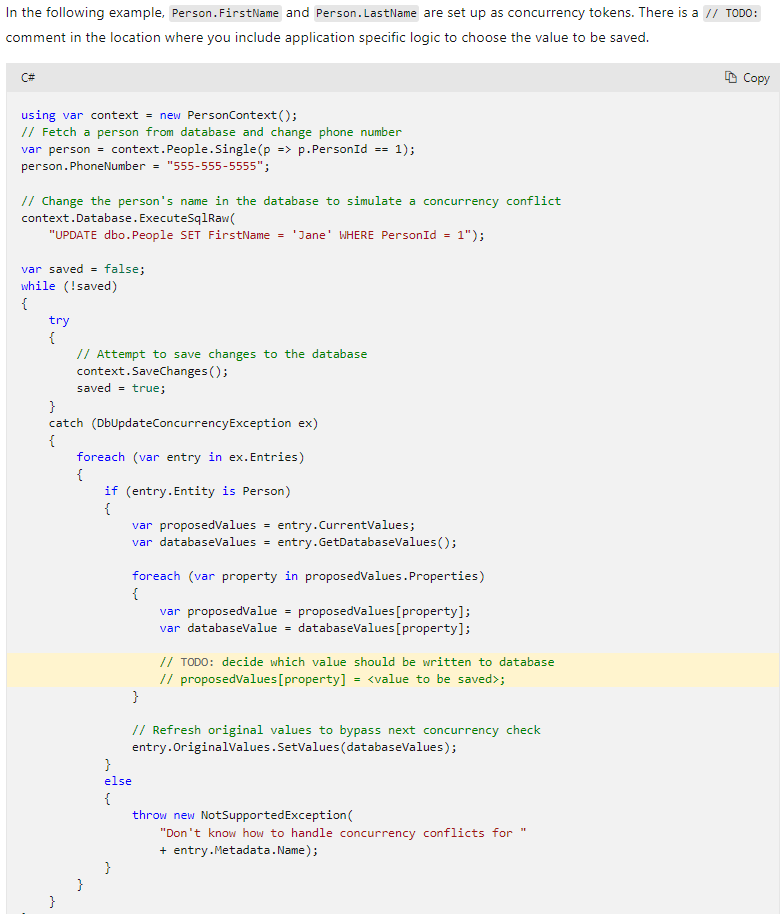Would like to prevent two or more users from editing the same hierarchy (Possibly using optimistic locking). My general approach to prevent concurrency(two users editing the same record at same time)was as below, but using this approach (row version) does not seem to work for this hierarchy. Think the reason was when a user updates(add or remove child), the record opens and closes(when a click is made) in a fraction of second. Other user editing the same hierarchy page does not get conflict as the same record would not be open and edited in-between that time period.
HierarchySearch retrieves all children(itemNos) which has same parent. Add or remove icon updates record's 'parentItemNo'. Can anyone suggest me how do I go about throwing conflict in this scenario. Thank you.
Only one table is being used. Table is designed in a way that each record has 'parentItemNo' field. We query for children by using parentItemNo field in 'where' clause. There is no separate record for parent with all associated children as its field.
Model:
public byte[] Timestamp { get; set; }
DBcontext:
entity.Property(e => e.Timestamp)
.IsRequired()
.IsRowVersion()
.IsConcurrencyToken()
.ValueGeneratedOnAddOrUpdate()
.HasColumnName("timestamp");
Below method is called if user adds or removes an item from hierarchy.
public async Task<itemTable> Update parentItemNo(itemTable item)
{
var result = await itemDbContext.items
.FirstOrDefaultAsync(e => e.itemNo == asset.itemNo);
// RowVersioning using Timestamp field- for conflict
assetDbContext.Entry(result).OriginalValues["Timestamp"] = asset.Timestamp;
if (result != null)
{
result.itemNo = item.itemNo;
result.parentItemNo= item.parentItemNo;
try{
itemDbContext.SaveChanges(); // for conflict
return result;
}
catch (DbUpdateConcurrencyException ex)
{
var entry = ex.Entries.Single();
var clientValues = (itemTable)entry.Entity;
var databaseEntry = entry.GetDatabaseValues();
var databaseValues = (itemTable)databaseEntry.ToObject();
if (databaseValues.parentItemNo != clientValues.parentItemNo)
return StatusCode(409); // conflict
}
}
return null;
}
Below method for Hierarchy search:
public async Task<IEnumerable<string>> GetChild(string parentItemNo)
{
var result = itemDbContext.items.Where(p => p.parentItemNo== parentItemNo).Select(p => p.itemNo).ToListAsync(); ;
if (result != null)
{
return await result;
}
return null;
}

